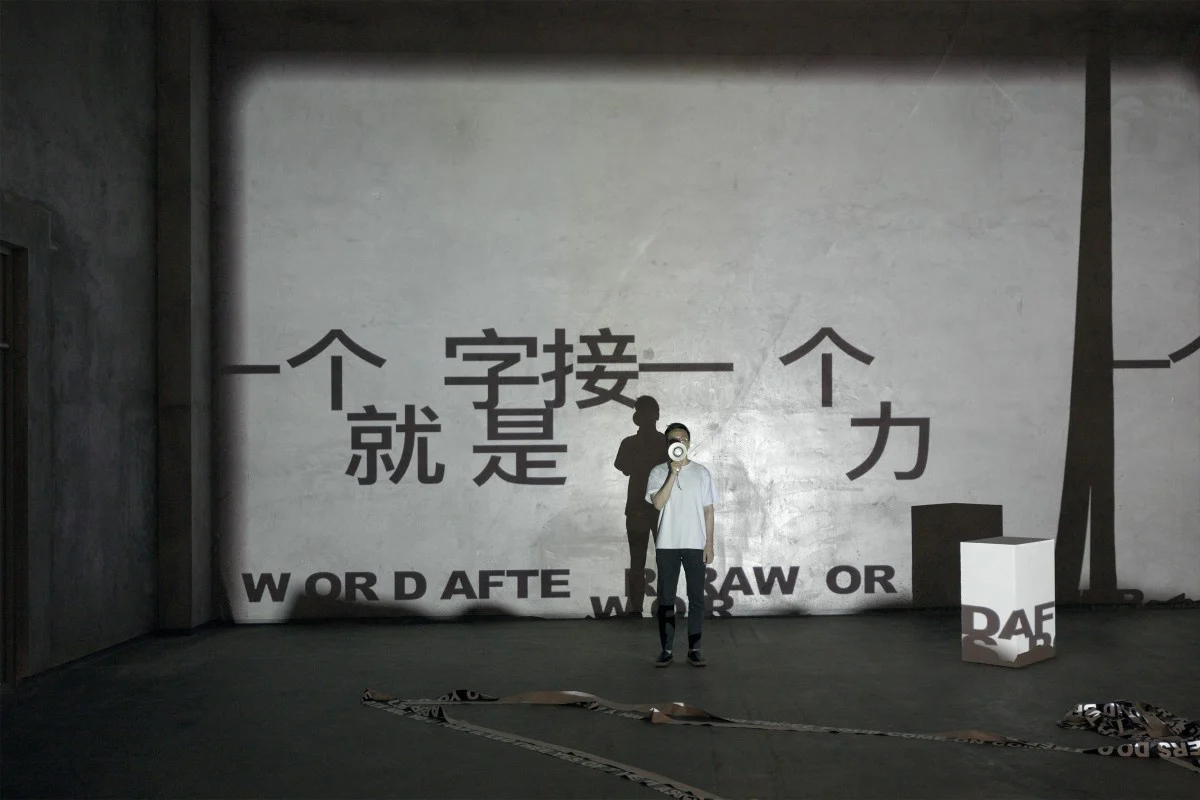This summer, Hong Kong artists Tsang Kin-wah and Mark Chung traded the city’s sweltering humidity for Dandong, a small frontier city in northeast China known for its proximity to North Korea. With fewer than a million residents, Dandong might seem an unlikely hub for contemporary art, yet it has gained global recognition thanks to the Yalu River Art Museum. Founded in 2006 by businessman Ji Dahai, the museum has become one of China’s most progressive art institutions, attracting artists from around the world.
Tsang and Chung are the first artists from Hong Kong to exhibit there, and both are producing some of their boldest work to date. Tsang, celebrated for his text-based installations, has created an exhibition titled Alongsen ten ce. Stripped-down words and projected fragments create immersive environments that reflect on instability in today’s world. For the first time, he has also incorporated sound: inspired by watching North Korean soldiers and singers across the river, he asked the museum’s security guards to read his broken texts through loudspeakers, urging audiences to mimic the performance. Computer-generated voices in Mandarin and English interlace with these acts, transforming the gallery into a stage where meaning constantly slips and reforms.
Chung, meanwhile, found inspiration in Dandong’s turbulent history. A conversation with a local about the Yalu River Broken Bridge — built by the Japanese in 1911, bombed during the Korean War, and now preserved as a monument — shifted his artistic direction. He created Red Neckerchief, a floor installation made by silkscreening composite photos with shoe polish, visible only under light. The work reflects fragile resistance to official narratives, evoking the childhood memory of standing on the broken bridge in a red communist scarf.
The museum’s group exhibition, inspired by Germany’s Documenta, also features works by Dandong-born artists. Bi Jianye, whose grandparents fought in the Korean War, uses envelopes from long-lost family correspondence between mainland China and Taiwan as canvases. His work explores how national histories fracture personal lives, echoing themes of displacement and memory.
Dandong, shaped by Russian, Korean, Japanese, and Chinese influences, remains a city of transitions. For artists like Tsang and Chung, it offers fertile ground to explore identity, history, and expression. At the Yalu River Art Museum, their works intertwine with those of local and international peers, creating an ongoing dialogue across borders and generations.
READ MORE:
